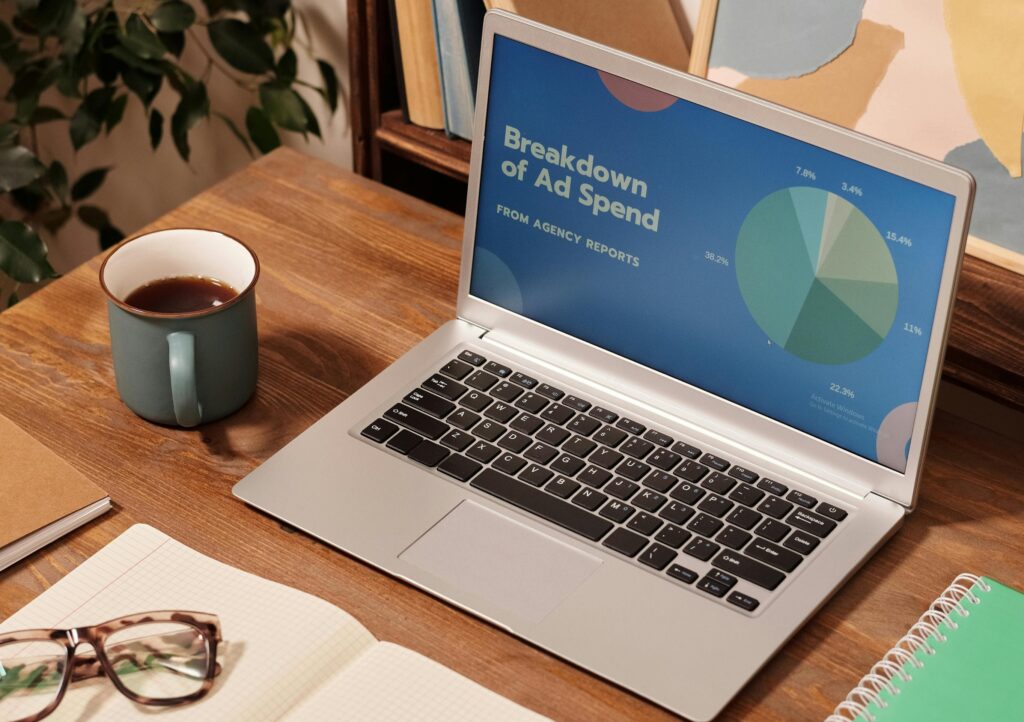Overview of the Importance of Online Advertising for Small Businesses
With the vast majority of consumers turning to the internet to find products and services, establishing a strong online presence is no longer optional—it’s essential. Online advertising offers an unparalleled opportunity for small businesses to reach their target audience, enhance brand visibility, and compete on a level playing field with larger competitors. Whether it’s through social media, search engines, or websites, paid advertising services play a crucial role in connecting businesses with potential customers.
PPC (Pay-Per-Click) Campaigns and Their Relevance
Pay-Per-Click (PPC) campaigns are a cornerstone of modern online advertising strategies. As the name suggests, PPC is a model of internet marketing in which advertisers pay a fee each time one of their ads is clicked. Essentially, it’s a way of buying visits to your site, rather than attempting to “earn” those visits organically.
PPC advertising is very efficient and effective because it lets you see your ads immediately and target them precisely based on keywords, demographics, and other factors. For small businesses, understanding and leveraging PPC advertising management services can lead to a significant return on investment (ROI), as it allows for direct control over costs and the ability to measure success.
To help your small business grow and be successful, we will talk more about how to create a strong paid advertising strategy, run effective PPC campaigns, make the most of your advertising budget, and more.
Understanding the Basics of Online Advertising and PPC
Definition and Significance of PPC in Digital Marketing
Pay-Per-Click (PPC) advertising is a powerful tool in the arsenal of digital marketing strategies, distinguished by its pay-for-performance model. This approach allows advertisers to place ads in strategic locations online—be it on search engines, social media platforms, or other websites—and pay only when a user clicks on the ad.
Pay-per-click (PPC) is important in digital marketing because it lets businesses show specific ads to people who are interested in a product or service. This precision, coupled with the capability to track and measure the effectiveness of campaigns in real-time, makes PPC a valuable investment for businesses aiming to maximize their online visibility and drive conversions.
How PPC Fits into a Small Business’s Overall Marketing Strategy
For small businesses, integrating PPC into their overall marketing strategy can provide a competitive edge. Unlike traditional advertising, which often requires significant upfront investment with uncertain returns, PPC offers a more controlled and cost-effective approach through careful management of budgets.
By selecting specific keywords and setting targeted campaigns, small businesses can ensure that their ads appear to their targeted audience, thus improving their chances of attracting potential customers. Furthermore, PPC campaigns can be scaled according to budget constraints and business goals, making them a flexible option for businesses of all sizes.
Additionally, PPC advertising complements other digital marketing efforts, such as search engine optimization (SEO) and content marketing, by providing an immediate boost in traffic and visibility. While SEO efforts can take time to yield organic results, PPC can fill the gap by driving targeted traffic in the short term.
Setting Clear Objectives for Your Campaigns
Identifying Your Target Audience
Before launching any PPC campaign, it is crucial for small businesses to identify their target audience. Understanding who your potential customers are—demographically, geographically, and behaviorally—lays the foundation for effective campaign targeting.
By segmenting your audience based on factors such as age, gender, interests, and purchasing behavior, you can tailor your ads to resonate with specific audience segments, thereby maximizing their relevance and impact.
You can make sure that your PPC campaigns reach the people who are most likely to be interested in your business and buy from you by focusing on the right audience segments.
Determining Your Advertising Goals
Once you’ve identified your target audience, the next step is to define clear objectives for your PPC campaigns. What do you hope to achieve with your advertising efforts? Are you looking to increase brand awareness, generate leads, drive sales, or promote a specific product or service? Clarifying your advertising goals is essential for guiding campaign strategy and measuring success effectively.
For small businesses, setting SMART (Specific, Measurable, Achievable, Relevant, Time-bound) goals can provide a framework for campaign planning and evaluation. For example, a goal could be to increase website traffic by 20% within the next three months or to generate 100 new leads per month through PPC advertising. By establishing clear and quantifiable objectives, you can align your PPC campaigns with overarching business objectives and track progress over time.
Furthermore, consider the buyer’s journey and where your target audience is in the decision-making process. Are they in the awareness stage, actively seeking information about your industry or product? Or are they further along the funnel, ready to make a purchase decision? Tailoring your messaging and call-to-action to align with the buyer’s journey can help optimize campaign performance and maximize conversion rates.
Developing a Paid Advertising Strategy

Planning Your Approach
Planning is the cornerstone of any successful paid advertising strategy for small businesses. Start by defining your campaign objectives, target audience, and key performance indicators (KPIs) to measure success.
Think about which platforms (like Google Ads, Facebook, or LinkedIn) will help you reach your goals and audience the most. Find the search terms and phrases that people in your target audience are likely to use when they are looking for products or services like yours by doing serious keyword research. Additionally, analyze competitor strategies to identify opportunities and differentiate your offerings in the market.
Crafting Effective Advertisements
Crafting compelling advertisements is crucial for capturing the attention of your target audience and driving engagement. Ensure your ad copy is concise, persuasive, and tailored to resonate with your audience’s needs and interests.
Incorporate strong calls-to-action (CTAs) that prompt users to take desired actions, whether it’s clicking through to your website, signing up for a newsletter, or making a purchase. Utilize high-quality visuals, such as images or videos, to enhance the visual appeal of your ads and effectively convey your message. Continuously test and optimize your ad creative to maximize performance and achieve better results over time.
Budgeting for Success
Budgeting plays a vital role in the success of your paid advertising campaigns. Determine how much you are willing to invest in advertising and allocate your budget strategically across different campaigns and channels. Consider factors such as keyword competitiveness, audience size, and campaign objectives when setting your budget. Monitor your spending closely, and adjust your budget allocation based on campaign performance and ROI.
Remember that the cost of pay-per-click (PPC) ads can change based on things like how competitive the industry is and where the ads are placed. Because of this, it is important to find a balance between your campaign’s effectiveness and your budget.
By carefully planning your approach, crafting compelling advertisements, and budgeting strategically, small businesses can develop a robust paid advertising strategy that drives meaningful results and contributes to overall business growth and success.
Optimizing and Managing Your PPC Campaigns
Monitoring Performance
Monitoring the performance of your PPC campaigns is essential for ensuring they are on track to meet your objectives and deliver a positive return on investment (ROI). Utilize analytics tools provided by the advertising platforms, such as Google Ads or Facebook Ads Manager, to track key performance indicators (KPIs).
Regularly review performance metrics to identify areas of strength and opportunities for improvement. Pay attention to factors like ad engagement, keyword performance, and audience demographics to gain insights into campaign effectiveness and adjust your strategy accordingly.
Continuous Improvement
Continuous improvement is the hallmark of successful PPC campaigns. Use the insights gathered from performance monitoring to make data-driven adjustments and optimizations to your campaigns.
Test different ad copy, images, and CTAs to determine which variations resonate best with your audience and drive the highest conversion rates. Experiment with bidding strategies, targeting options, and ad placements to optimize campaign performance and maximize ROI.
Implement A/B testing methodologies to compare the effectiveness of different campaign elements and refine your approach over time.
Additionally, stay informed about industry trends, changes in consumer behavior, and updates to advertising platforms to adapt your strategy accordingly. Be proactive in addressing any issues or challenges that arise during campaign execution, and be open to experimenting with new strategies and tactics to stay ahead of the competition.
By continually fine-tuning and optimizing your PPC campaigns, you can ensure they remain effective and competitive in the ever-evolving digital landscape.
Navigating PPC Advertising Costs
Understanding Cost Structures
Navigating PPC advertising costs requires a clear understanding of the underlying cost structures and bidding strategies involved. At the core of PPC advertising is the cost-per-click (CPC) model, where advertisers pay a fee each time a user clicks on their ad. The actual cost of each click is determined through a bidding process, where advertisers compete for ad placement based on their bid amount and ad quality.
There are different bidding strategies, such as manual bidding, automated bidding, and enhanced CPC. Each has its own pros and cons. By comprehending these cost structures and selecting the most suitable bidding strategy, small businesses can optimize their PPC campaigns to achieve maximum results within their budget constraints.
Tips for Managing Costs
To get the best return on investment (ROI) and make sure the business will last, it is important to keep PPC advertising costs under control. To get the most out of your advertising budget, consider the following tips:
- Set clear budget limits: Define your budget constraints upfront and allocate your funds strategically across campaigns and ad groups based on performance and priorities.
- Focus on high-value keywords: identify and prioritize keywords that are most relevant to your business and have the potential to drive valuable traffic and conversions. Optimize your bids and ad spend accordingly to maximize the impact of your PPC campaigns.
- Monitor performance closely: Regularly monitor campaign performance metrics to identify inefficiencies or areas of overspending. Adjust your bids, targeting options, and ad creative as needed to optimize performance and minimize wasteful spending.
- Implement ad scheduling: Utilize ad scheduling features to control when your ads are displayed to target audiences most likely to engage with them. Adjust your bidding strategies based on peak times of user activity and conversion opportunities to maximize cost-effectiveness.
- Leverage ad extensions: Take advantage of ad extensions, such as site links, callouts, and structured snippets, to enhance the visibility and relevance of your ads without incurring additional costs. These extensions can improve ad performance and drive higher click-through rates (CTR) at no extra expense.
- Experiment with ad formats: Explore different ad formats, such as text ads, display ads, and video ads, to identify which formats resonate best with your target audience and deliver the highest ROI. Test and refine your ad creative and messaging to optimize performance and drive cost-effective results.
By implementing these cost-management strategies and remaining vigilant in monitoring and optimizing campaign performance, small businesses can navigate PPC advertising costs effectively and achieve their advertising objectives within budget constraints.
In conclusion, mastering PPC advertising is essential for small businesses looking to thrive in the competitive market. By understanding the basics of online advertising and PPC, setting clear objectives, developing a comprehensive paid advertising strategy, and optimizing campaigns for success, businesses can effectively reach their target audience, drive engagement, and achieve their marketing goals.
With careful monitoring, continuous improvement, and strategic budget management, small businesses can navigate PPC advertising costs while maximizing ROI and driving sustainable growth. As small businesses continue to evolve and adapt to changing market dynamics, investing in PPC advertising remains a valuable and impactful strategy for driving success.

